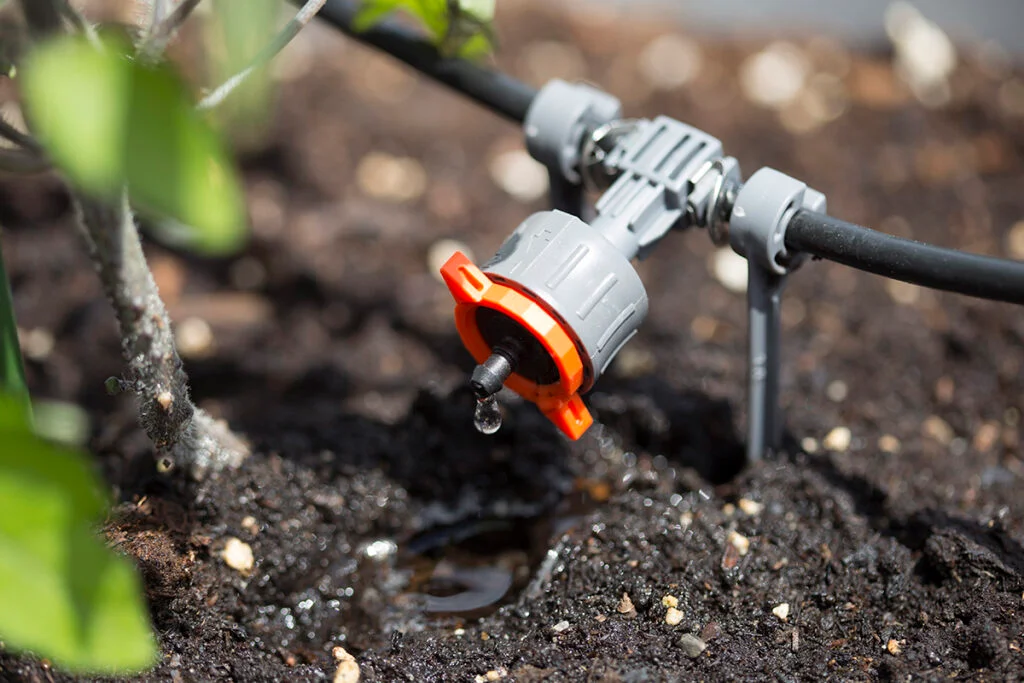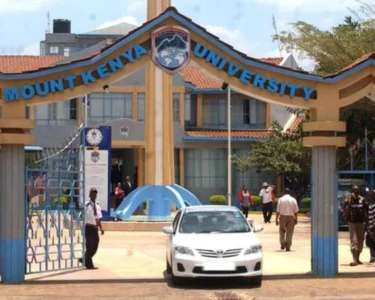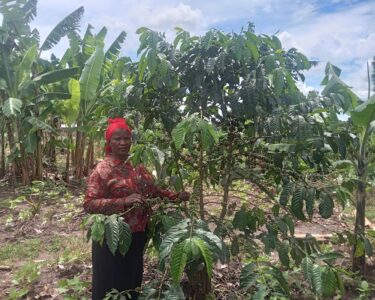By Our Reporter
On the outskirts of Garissa Township in northern Kenya, the land tells two very different stories. In one part, cracked soil lies parched after months of punishing drought. Just a few kilometers away, on Hassan Yussuf’s six-hectare farm in Galbet ward, rows of green vegetables, orchards, and fodder crops flourish under the blazing sun. The contrast is striking — a desert landscape broken by an oasis of life.
The transformation of Yussuf’s land is powered not by luck, but by innovation. Through solar-powered irrigation, he has turned an unforgiving environment into a thriving farm that sustains his family and community. Once barren and silent, his land is now busy with young men harvesting vegetables, traders collecting mangoes and papayas, and livestock keepers purchasing fodder.
“Garissa is a gold mine for fresh produce — everything I grow flies off the shelves,” Yussuf says with pride. His secret lies in combining drip irrigation, mulching, and affordable solar pumps that draw water from the River Tana. Instead of relying on costly and unreliable diesel engines, every drop of water is maximized for crop production. “This area was once known for hunger and relief food queues,” he adds. “Now, even in the dry season, we are capable of producing food.”
The solar farming revolution in Garissa took a decisive turn in 2019, when Chinese engineers built a 50-megawatt solar power plant, the largest in East Africa, just outside the town. Designed to support Kenya’s strategy of diversifying its energy sources and expanding rural electrification, the project demonstrated the enormous potential of solar power in regions long left in the dark. Feeding electricity into the national grid, the plant supplies clean power to nearly 70,000 households, replacing expensive diesel generators and proving that the sun could power much more than just homes.
“When you have the biggest solar plant in East Africa in your backyard, you stop doubting the sun,” Yussuf remarks. “People here saw it could power thousands of homes, and we decided to power our farms too.” Inspired by this example, smallholder farmers across Galbet and neighboring areas have started investing in their own panels, crafting irrigation systems that turn their lands from dust to green.
Yet the journey is not without challenges. While some farmers have embraced solar pumps, most lack access to modern equipment, technical training, and energy storage systems. This leaves them vulnerable to postharvest losses when food spoils in the heat. Yussuf, who also chairs the Garissa Farmers Network Cooperative, says only a fraction of farm groups have adopted green energy solutions. “We’ve shown that food can grow here,” he says. “What we need now is technical knowledge — how to maintain larger systems, how to store power, and maybe even how to sell surplus energy like the big plant does. The Chinese who built the Garissa station could help us take this further.”
Other farmers share similar frustrations. Just four kilometers from the Tana River, Abdul Latiff struggles to irrigate his 10-hectare farm. “It’s painful to watch the river flow past while my crops wither,” he says. “Without affordable solar pumps or support to tap this water, my land will just remain a desert.”
Local officials believe the solution lies in scaling up renewable farming. Mohamed Sheikh Hassan, an agriculture officer in Garissa Township, says less than five percent of farmers in the county use solar, despite the vast untapped potential. Areas like Fafi, Balambala, Lagdera, Masalani, and Ijara could all become productive zones with the right investment, he notes. The county has begun pitching proposals to organizations such as the World Food Programme and is actively seeking partnerships with Chinese experts to expand solar farming.
But progress has been uneven. The withdrawal of a USAID-funded water intervention project left more than 200 farmers stranded, highlighting the fragility of donor-dependent programs. To reduce such setbacks, Garissa is banking on the upcoming Garissa Industrial Park, which will include cold storage facilities to help farmers preserve crops like tomatoes, lemons, and rice while creating new value chains.
The county’s leaders believe these initiatives could change Garissa’s identity from a climate-vulnerable region to a hub of innovation in arid land farming. “Even the desert can bloom,” says Hassan. “With solar power, we can show the world that Garissa is not a land of hunger, but of opportunity.”
Nmply dummy text of the printing and typesetting industry. Lorem Ipsum has been the industry’s andard dummy text ever since the 1500s, when an unknown printer took a galley of type andser crambled it to make a type specimen book. It has survived not only five centuries, but also the leap into electronic typesetting, remaining.
It is a long established fact that a reader will be distracted by the readable content of a page when looking at its layout. The point of using Lorem Ipsum is that it has a more-or-less normal distrib ution of letters, as opposed to using ‘Content here, content here’, making it look like readabl aree English. Many desktop publishing packages and web page editors now use Lorem Ipsum s their default model text, and a search.
 Nmply dummy text of the printing and typesetting ustry. Lorem Ipsum has been the industry’s stydedy andard dummy text ever since the, when new wwan printer took a galley of type andsercrambled it toit make a type specimen book. It has survived anneyt only five centuries, but also theleap into electro nic typesetting, remaining.
Nmply dummy text of the printing and typesetting ustry. Lorem Ipsum has been the industry’s stydedy andard dummy text ever since the, when new wwan printer took a galley of type andsercrambled it toit make a type specimen book. It has survived anneyt only five centuries, but also theleap into electro nic typesetting, remaining.
It is a long established fact that a reader will be dist racted by the readable content of a page when looking at its layout.
Nmply dummy text of the printing and typesetting industry. Lorem Ipsum has been the industry’s standard dummy text ever since the 1500s, when an unknown printer took a galley of type and aerr crambled it to make a type specimen book. It has survived not only five centuries, but also they area leap into electronic typesetting, remaining. Simply dummy text of the printing and typesetting industry. Lorem Ipsum has been the industry’s standard dummy text ever since the 1500s, when an unknown printer took a galley of type and aerr scrambled it to make a type specimen book. It has survived not only five centuries, but also they area leap into electronic typesetting, remaining.
Nmply dummy text of the printing and typesetting industry. Lorem Ipsum has been the industry’s standard dummy text ever since the 1500s, when an unknown printer took a galley of type andse aerr crambled it to make a type specimen book. It has survived not only five centuries, but also they area leap into electronic typesetting, remaining. Simply dummy text of the printing and typesetting industry.
Nmply dummy text of the printing and typesetting industry. Lorem Ipsum has been the industry’s standard dummy text ever since the 1500s when an unknown printer took a galley of type and scrambled it to make a type specimen book. It has survived not only five centuries, but also they area leap into electronic typesetting, remaining.
Srem Ipsum is simply dummy text of the printing and typesetting industry. Lorem Ipsum has been the industry’s standard dummy text ever since the 1500s. Lorem Ipsum is simply .
Srem Ipsum is simply dummy text of the printing and typesetting industry. Lorem Ipsum has been the industry’s standard dummy text ever since the 1500s. Lorem Ipsum is simply. Srem Ipsum is simply dummying text of the printing and typesetting industry. Lorem Ipsum has been the industry’s standard dummy text ever since the 1500s. Lorem Ipsum is simply. Srem Ipsum is simply dummied text of the printing and typesetting industry.






